Like a secret garden, Hillcrest Cemetery is a quiet respite from the commotion of downtown Cary’s traffic and commerce.
Tucked at the end of Page Road, it is nearly five acres of green space surrounded by trees and wooded back yards. It is also the final resting place of many of the men and women who built the Town of Cary.
“It’s very meaningful, this little corner,” said Carla Jordan Michaels, who grew up around the corner from the cemetery and would frequently walk through the cemetery with her grandmother.
That grandmother is now buried in the family plot at Hillcrest, along with generations of other Jordans, going back to Michaels’ great-great grandparents.
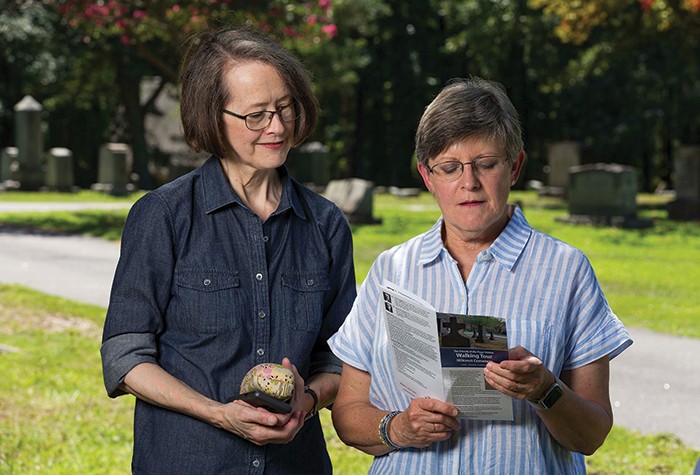
Carla Michaels, left, and Barb Wetmore belong to the Friends of the Page-Walker Hotel, which works to promote education about Cary history. Both have personal ties to Hillcrest Cemetery and enjoy telling stories of the famous and not-so-famous people buried there.
Michaels, a member of the Friends of the Page-Walker Hotel, enjoys unearthing forgotten stories of those at Hillcrest. She is joined in her admiration of the place by Barb Wetmore, who has been with the Friends since the group’s first efforts to restore the old railroad hotel.
In the ’80s, Wetmore lived on Page Road. She would look out her window and see the grave markers through the trees, and eventually she began walking the paths.
“It is so peaceful,” she said. “Nobody knows about this cemetery. The only reason I knew about it was I wound up living on the dead-end street — literally.”
Hillcrest, which is owned and maintained by the Town of Cary, was designated a historic landmark in 2014. Earlier this year, the town hired historic preservationist Michael Verville to repair and restore 77 monuments.
“Some of the larger ones were leaning pretty seriously and were a safety risk for people who walked through the cemetery,” said Verville, whose first task was to stabilize the tipping monuments. He plans to finish the project by the end of the year, preserving the headstones for visitors of all sorts.
For those looking for a peaceful walk through history, a map is available at the entrance. Created by the Friends of the Page-Walker, it highlights the final resting places of some of Cary’s most notable residents and a little bit about them.
“If the people buried here could speak, they could tell you the whole history of Cary, going all the way back. There are people buried here who go back to the earliest incorporation of Cary as a town,” said Wetmore. “You will recognize a lot of these names. You drive on streets that are named after the people here.”
Nathaniel Jones
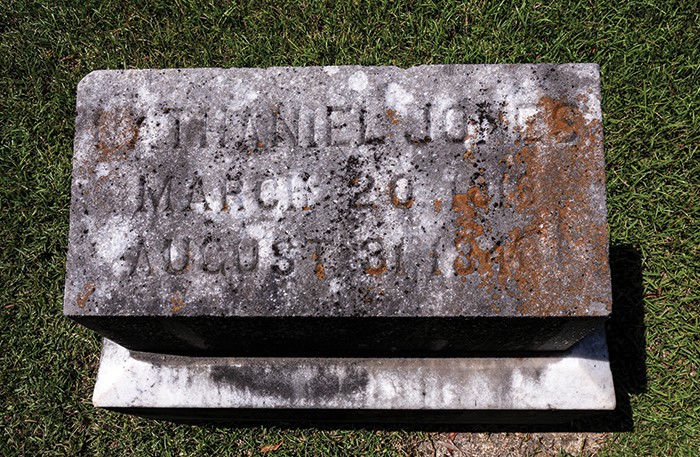
This marker is the earliest recorded date of death in the cemetery. One of many Joneses buried in the cemetery, Nathaniel Jones died on August 31, 1840.
Alfred “Buck” Jones
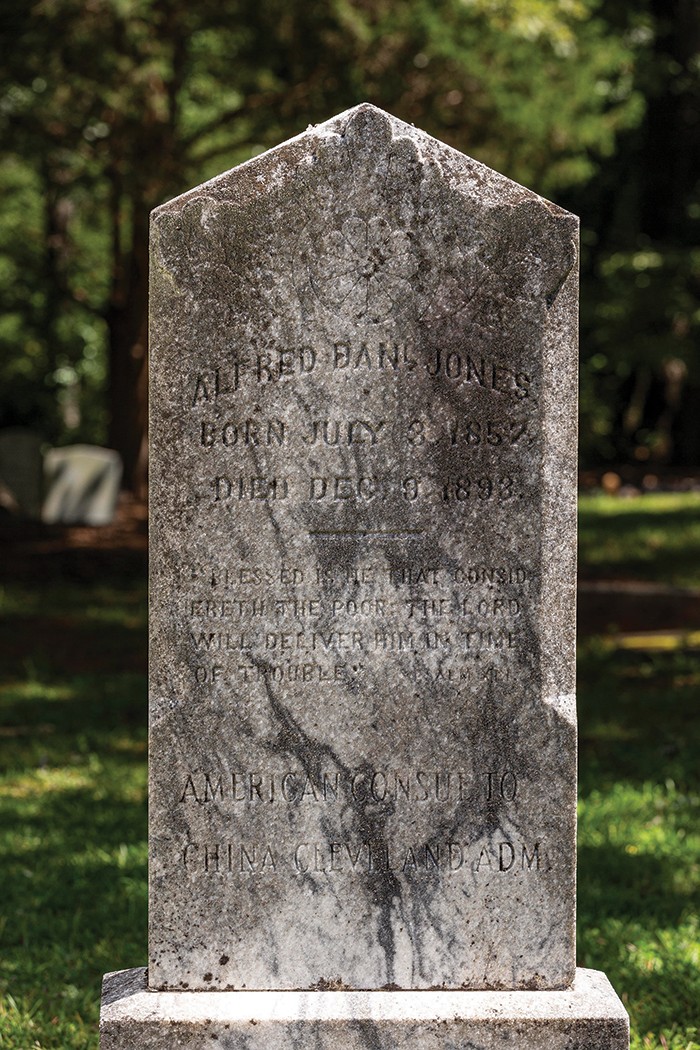
Alfred “Buck” Jones provided land and a building for the first school for black children in Cary. Active in politics, he was appointed consul general to Shanghai, China, by President Grover Cleveland. Soon after arriving in Shanghai, he contracted malaria and died. His body was shipped back to Cary, and a huge funeral was held, with thousands of mourners coming from across North Carolina.
“Those kinds of stories are why you need to engage the community and help them understand. ‘Why is this named Buck Jones?’ There’s a history behind this, a history worth paying attention to,” said Wetmore.
Scion Holleman
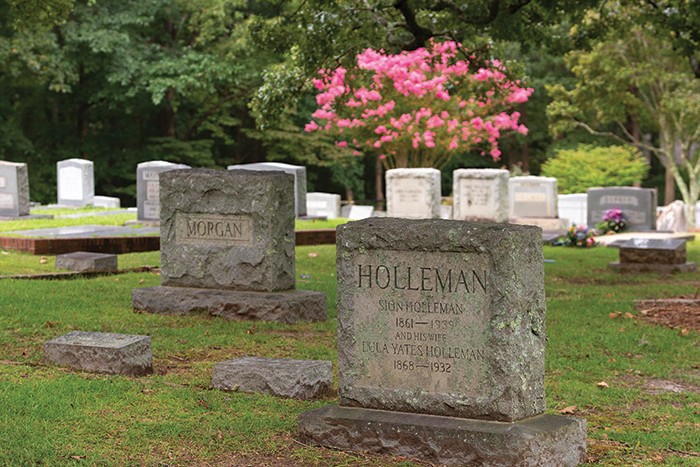
In the 1913 book “Historical Raleigh,” Scion Holleman was listed as “one of the prominent, substantial and influential citizens” of Cary.
Fred G. Bond
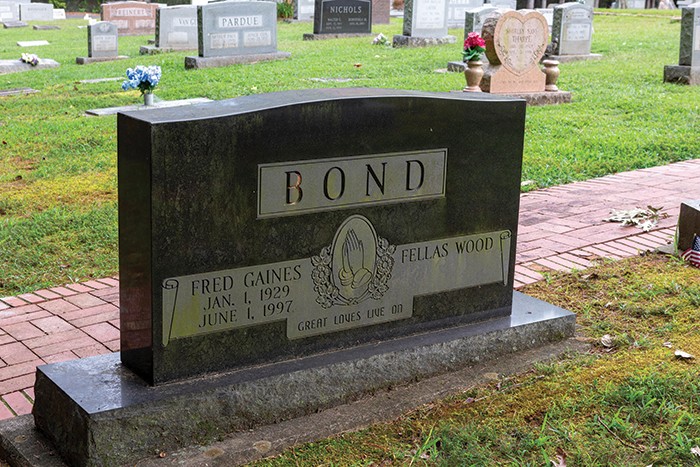
Fred G. Bond, who served as Cary mayor from 1971-1983, is familiar to Cary residents because of his namesake park. When he joined the Cary Town Council in 1965, the town’s population was only 7,000, and Bond was determined that Cary maintain its small-town atmosphere as it grew. During his tenure, Bond created an appearance commission, a downtown improvement program, and built a new town hall and library.
In a 1997 obituary, then-mayor Koka Booth was quoted as saying, “Whatever Cary was and whatever Cary will be, was because of Fred Bond’s leadership.”
Mary Ray Yarborough
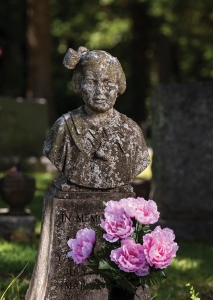 Dr. Frank Yarborough was one of Cary’s leading doctors and served as mayor from 1927-1928. One of the most touching monuments in the cemetery is for his daughter, Mary Ray Yarborough.
Dr. Frank Yarborough was one of Cary’s leading doctors and served as mayor from 1927-1928. One of the most touching monuments in the cemetery is for his daughter, Mary Ray Yarborough.
“She was the apple of her father’s eye; she called him Daddy Blue-Eyes,” said Michaels. She explains that when Mary was 11, she contracted meningitis, and her father was unable to save her.
“She’s memorialized with this beautiful bust,” she said. “It’s so poignant that it touches everybody who sees it, without them even knowing that here was this doctor who couldn’t save his own daughter.”
A Few Others of Note
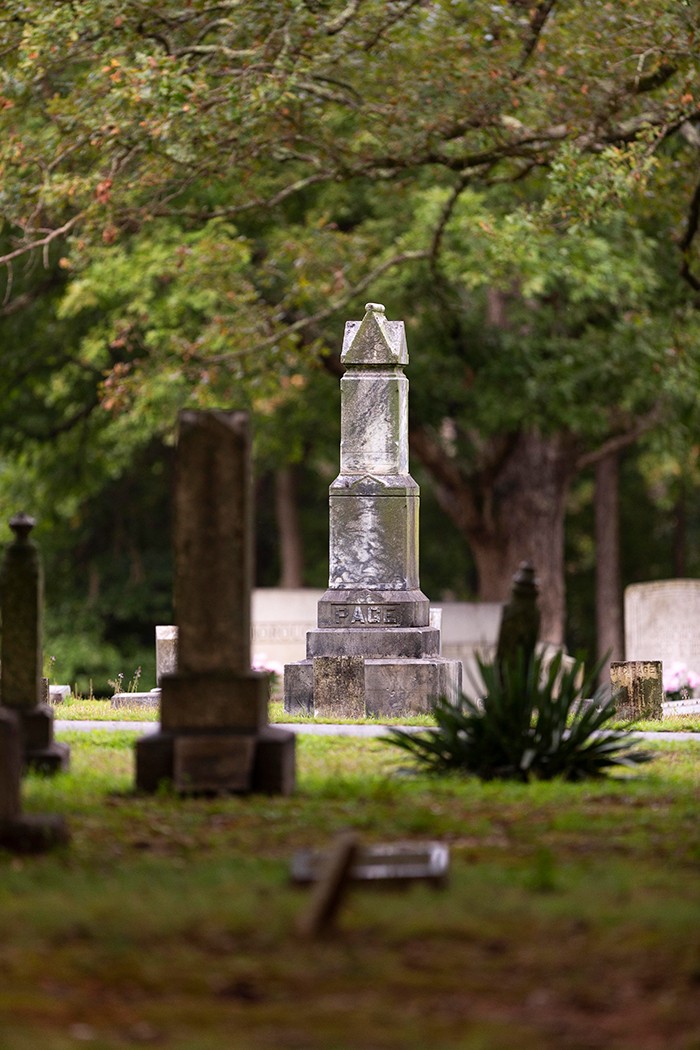
Obelisks were often used to symbolize strength and fatherhood.
Robert J. Harrison, owned a thriving wagon works company, located at present-day Chatham Street and Harrison Avenue, which is named for him. At the time, it was one of the largest employers in Wake County, says Michaels, “known far and wide for their quality, so it was a very important industry.” Harrison also served as mayor of Cary in 1903.
C. M. Baucom is memorialized by a large grave marker documenting his military service in both the Spanish-American War and World War I. During his time in France, his health was damaged by gas exposure, says Michaels. “It points to his love of country and his willingness to serve, so that one is particularly poignant for me,” she said.
Marcus Baxter Dry was principal of Cary High School for 34 years, from 1908 to 1942, and under his leadership, it became one of the leading schools in North Carolina. He was also the first principal of what eventually became Wingate College in Wingate, N.C.
Take a Trolley Through History
The Friends of the Page-Walker hold historic-themed trolley tours twice a year, spring and fall. The next tour is Sunday, Nov. 3; tickets are $10. Private groups of 20 people or more can also book the trolley. friendsofpagewalker.org
- Take a Bough
- Discover Hillcrest
- Going Through a Phrase
- A Cut Above
- Dive into Adventure at the Greensboro Science Center
- Nonprofit Spotlight: Team Drea
- Worth the Drive: On the Square in Tarboro
- Key Lime Gose from Durty Bull Brewing Company
- Port Cask Finished Virginia-Highland Whisky from the Virginia Distillery Co.
- Home Tour: Light and Bright
- Small Business Spotlight: City Garden Design
- Garden Adventurer: It’s Tatarian Aster Time!
- From the Editor: October 2019




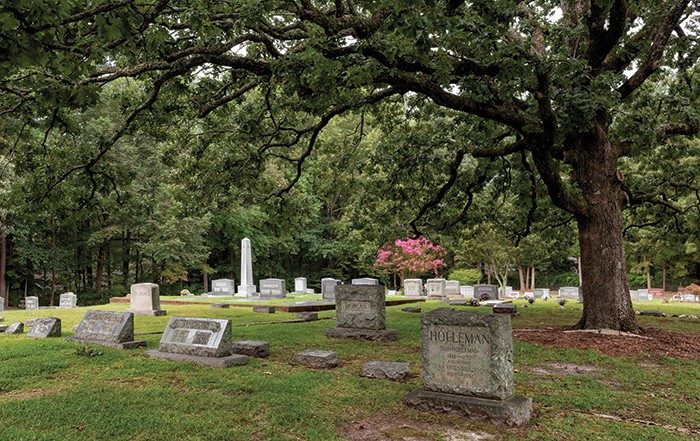


A great article! Carla and Barb did the Friends proud, as usual.
Hillcrest is a special place and its recent repair and renovation helps preserve it for the future.
P.S. I love the street sign that says “Hillcrest Cemetery…no outlet”!
A great article! I used to play in that cemetery as a child. All of my ancestors on my father’s side are buried there. Recently, my parents joined them. It’s a lovely, peaceful place.